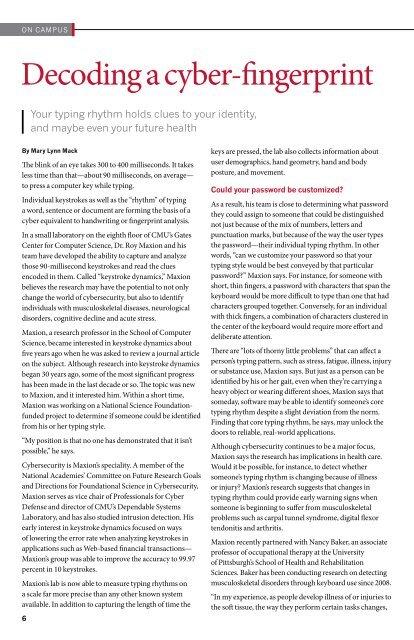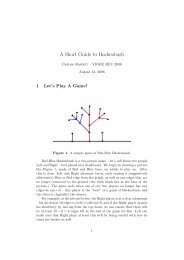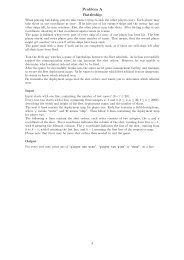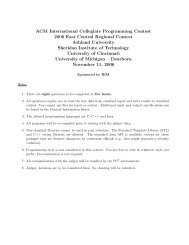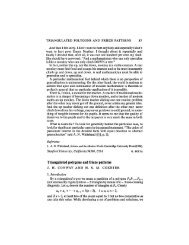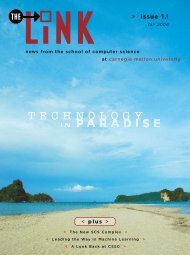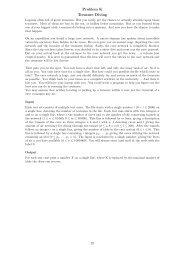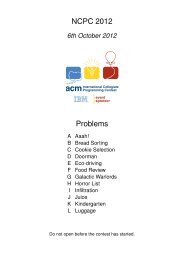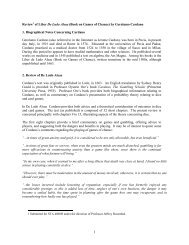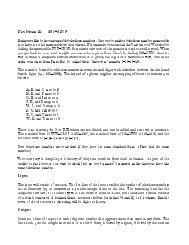Download now (1.3MB, PDF reader required) - Link home page
Download now (1.3MB, PDF reader required) - Link home page
Download now (1.3MB, PDF reader required) - Link home page
You also want an ePaper? Increase the reach of your titles
YUMPU automatically turns print PDFs into web optimized ePapers that Google loves.
ON CAMPUS<br />
Decoding a cyber-fingerprint<br />
Your typing rhythm holds clues to your identity,<br />
and maybe even your future health<br />
by mary lynn mack<br />
The blink of an eye takes 300 to 400 milliseconds. It takes<br />
less time than that—about 90 milliseconds, on average—<br />
to press a computer key while typing.<br />
Individual keystrokes as well as the “rhythm” of typing<br />
a word, sentence or document are forming the basis of a<br />
cyber equivalent to handwriting or fingerprint analysis.<br />
In a small laboratory on the eighth floor of CMU’s Gates<br />
Center for Computer Science, Dr. Roy Maxion and his<br />
team have developed the ability to capture and analyze<br />
those 90-millisecond keystrokes and read the clues<br />
encoded in them. Called “keystroke dynamics,” Maxion<br />
believes the research may have the potential to not only<br />
change the world of cybersecurity, but also to identify<br />
individuals with musculoskeletal diseases, neurological<br />
disorders, cognitive decline and acute stress.<br />
Maxion, a research professor in the School of Computer<br />
Science, became interested in keystroke dynamics about<br />
five years ago when he was asked to review a journal article<br />
on the subject. Although research into keystroke dynamics<br />
began 30 years ago, some of the most significant progress<br />
has been made in the last decade or so. The topic was new<br />
to Maxion, and it interested him. Within a short time,<br />
Maxion was working on a National Science Foundationfunded<br />
project to determine if someone could be identified<br />
from his or her typing style.<br />
“My position is that no one has demonstrated that it isn’t<br />
possible,” he says.<br />
Cybersecurity is Maxion’s speciality. A member of the<br />
National Academies’ Committee on Future Research Goals<br />
and Directions for Foundational Science in Cybersecurity,<br />
Maxion serves as vice chair of Professionals for Cyber<br />
Defense and director of CMU’s Dependable Systems<br />
Laboratory, and has also studied intrusion detection. His<br />
early interest in keystroke dynamics focused on ways<br />
of lowering the error rate when analyzing keystrokes in<br />
applications such as Web-based financial transactions—<br />
Maxion’s group was able to improve the accuracy to 99.97<br />
percent in 10 keystrokes.<br />
Maxion’s lab is <strong>now</strong> able to measure typing rhythms on<br />
a scale far more precise than any other k<strong>now</strong>n system<br />
available. In addition to capturing the length of time the<br />
6<br />
keys are pressed, the lab also collects information about<br />
user demographics, hand geometry, hand and body<br />
posture, and movement.<br />
could your password be customized<br />
As a result, his team is close to determining what password<br />
they could assign to someone that could be distinguished<br />
not just because of the mix of numbers, letters and<br />
punctuation marks, but because of the way the user types<br />
the password—their individual typing rhythm. In other<br />
words, “can we customize your password so that your<br />
typing style would be best conveyed by that particular<br />
password” Maxion says. For instance, for someone with<br />
short, thin fingers, a password with characters that span the<br />
keyboard would be more difficult to type than one that had<br />
characters grouped together. Conversely, for an individual<br />
with thick fingers, a combination of characters clustered in<br />
the center of the keyboard would require more effort and<br />
deliberate attention.<br />
There are “lots of thorny little problems” that can affect a<br />
person’s typing pattern, such as stress, fatigue, illness, injury<br />
or substance use, Maxion says. But just as a person can be<br />
identified by his or her gait, even when they’re carrying a<br />
heavy object or wearing different shoes, Maxion says that<br />
someday, software may be able to identify someone’s core<br />
typing rhythm despite a slight deviation from the norm.<br />
Finding that core typing rhythm, he says, may unlock the<br />
doors to reliable, real-world applications.<br />
Although cybersecurity continues to be a major focus,<br />
Maxion says the research has implications in health care.<br />
Would it be possible, for instance, to detect whether<br />
someone’s typing rhythm is changing because of illness<br />
or injury Maxion’s research suggests that changes in<br />
typing rhythm could provide early warning signs when<br />
someone is beginning to suffer from musculoskeletal<br />
problems such as carpal tunnel syndrome, digital flexor<br />
tendonitis and arthritis.<br />
Maxion recently partnered with Nancy Baker, an associate<br />
professor of occupational therapy at the University<br />
of Pittsburgh’s School of Health and Rehabilitation<br />
Sciences. Baker has been conducting research on detecting<br />
musculoskeletal disorders through keyboard use since 2008.<br />
“In my experience, as people develop illness of or injuries to<br />
the soft tissue, the way they perform certain tasks changes,


